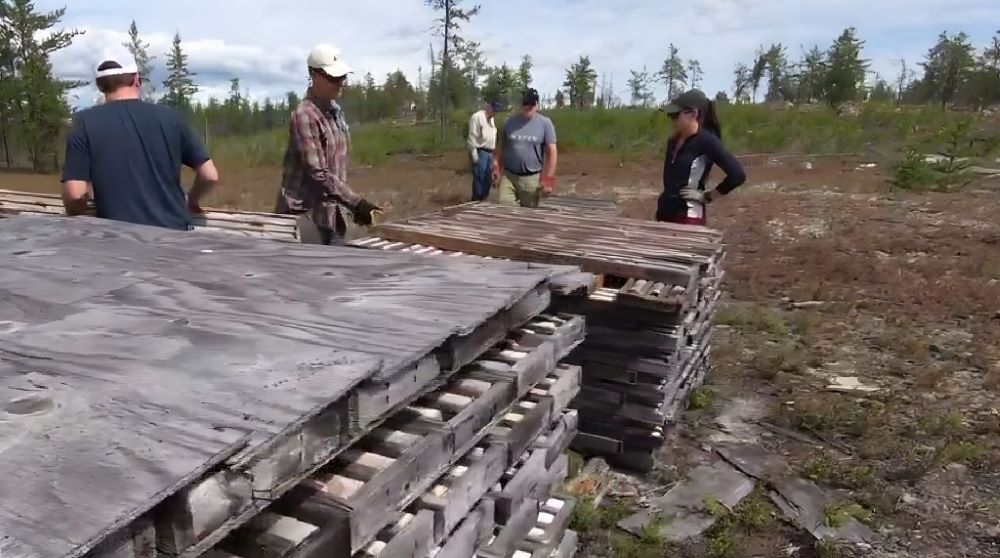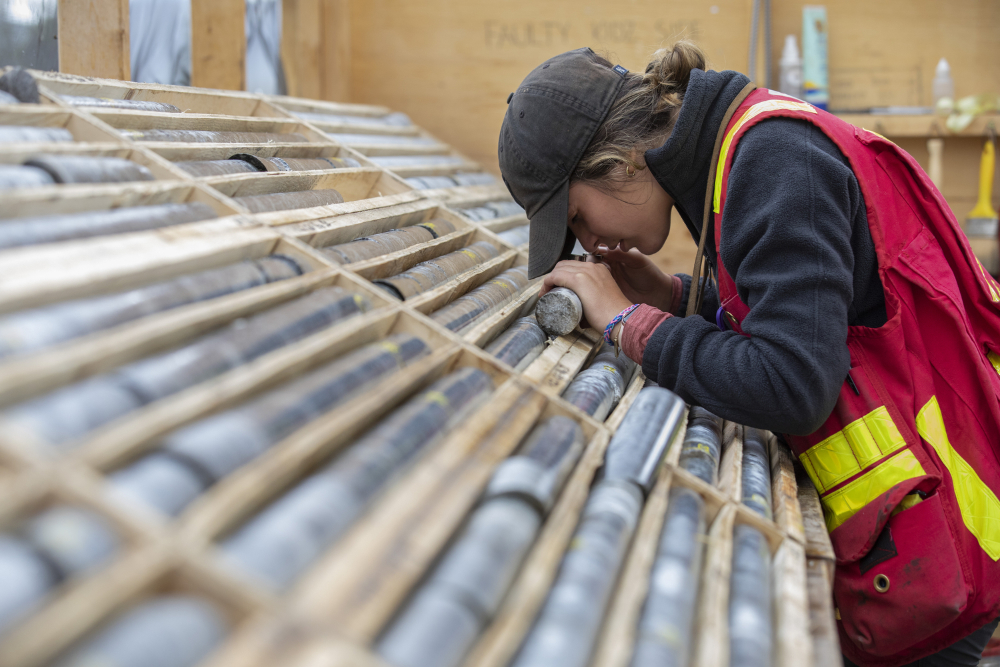New Gold’s New Gold
Poised and ready for action pretty much describes the scene at New Gold’s “New Afton” mine near Kamloops as crews continue to work underground to bring the Cdn$700 million mine into production later this year.
Located about 10 km west of Kamloops in one of the more popular mining regions in the province, the New Afton mine is quickly gearing up to make the area glow even brighter by producing about 85,000 ounces of gold, 75 million pounds of copper, and 214,000 ounces of silver per year over its estimated 12-year mine life, based on current reserves.
With current mineral reserves and resources (inclusive of reserves) of 1.1 million and 1.7 million ounces of gold, respectively, New Gold is optimistic that those numbers will only get larger because of additional resource potential on its property. Once in production, New Afton is expected to contribute significantly to New Gold’s current portfolio of operating assets, driving gold production growth at lower costs.
“New Gold is very excited about the continued progress at New Afton and our growing presence in BC,” said Robert Gallagher, President and Chief Executive Officer. “At current commodity prices, New Afton is expected to double the company’s cash flow. This will help drive investment in other significant projects like Blackwater in central BC.”
In fact, the prospects are so good that New Gold thinks its New Afton mine is just the first chapter in this story. The company believes, based on continuing work, that there is good exploration upside at depth in New Afton’s “C-Zone,” which lies below and to the side of the current “Main Zone,” and with similar mineralization.
Once underground development work is completed at the New Afton mine, New Gold says it plans to set up underground drilling stations to further delineate the potential of this resource.
Regardless of what the company plans to do in the future, it’s what has been done already and what’s on the site right now that’s making it newsworthy and the talk of the mining community.
Because of the mine’s location and infrastructure, directly accessible from the Trans-Canada Highway, with B.C. Hydro-owned 138 kV power lines, and gas and oil pipelines crossing the property, it has been a relatively easy project to permit.
And, probably most importantly, New Gold attributes much of its success for getting the mine to where it is today to the landmark Participation Agreement it has with the two First Nations bands in the region.
Through a dedicated Corporate Social Responsibility (CSR) program, New Gold has offered contractor contracts, educational initiatives, financial compensation and employment opportunities to First Nations’ people. In fact, close to 25% of the mine’s employees are from First Nations.
Further, the company has launched rigorous environmental practices ranging from baseline studies of flora and fauna, to water recycling to minimize consumption and to help keep mine water on site during mining and processing.
In short, New Gold has set the stage and is now ready to go mining.
“Go mining,” however, should read “go producing” because New Gold has, in fact, been mining the site since 2007 when it started developing the ore body’s two areas (Block 1/2), approximately 550m below the surface. Block 3 (B3) is at the 670 m level.
Access to the undercut and extraction levels is through a 5.5 m x 5.5 m decline from within the abandoned open pit at a gradient of 1:6 developed initially by a contract miner and subsequently reverted to New Gold employee mining.
A new conveyor decline has been developed at the same gradient from a portal adjacent to the processing plant. It was designed with four straight legs, varying in length from 700 m to 1,400 m with a cross section to provide adequate clearance for a loaded 50-tonne capacity haul truck and the conveyor structure itself, which is suspended from the roof of the decline.
Lateral accesses to the undercut and extraction levels, crusher, workshops and other underground infrastructure are also designed to accommodate the 50-tonne capacity trucks and high-capacity scoops.
A low-height undercut is designed with a flat section over the draw bell with an “A” shape forming the crown of the major apex, and a vertical interval of 17 m floor-to-floor has been adapted between the undercut level and the extraction level below. The excavations are sized to suit either diesel or electric scoops with a 6 – 7 tonne capacity.
Safety has been a high priority with New Gold, and extensive use of fibrecrete, rock bolts and cable bolts have been used throughout the mine; steel sets are in place to protect draw point brows.
As for processing the materials, New Gold will be using two stages of grinding, rougher flotation, rougher concentrate regrinding, first-stage cleaning followed by cleaner-scavenger flotation, and two additional stages of cleaner flotation.
Following that, the cleaner-scavenger concentrates will be returned for regrinding and the rougher tailings will be combined and sent to the tailings facility for cycloned sand placement. Mineralogical analysis and subsequent testing showed a strong potential benefit for flash flotation so New Gold has installed a simple two-cell circuit in the process. Gravity concentration circuits to optimize the recovery of gold and copper are also included in the primary and regrind circuits.
The mill is designed to process 11,000 tonnes of ore per day at full capacity and it will run 24 hours per day, 365 days per year. The process uses a two-stage SAG-Ball mill combination to produce a constant product size to the flotation circuit and a slurry stream will be tapped from the cyclone underflow to feed the gravity concentrator and flash flotation circuit to maximize gold recovery.
As stated earlier, New Afton is just one of many mines in the Kamloops area, but in a few more months, it will be the mine everyone is talking about as it nears its production start.





Comments